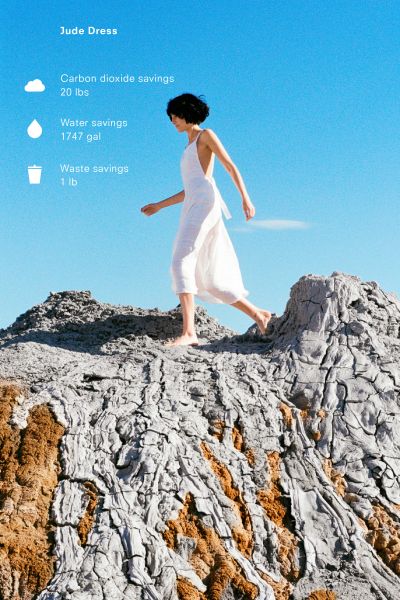Image

Source
Abrams, Margaret. 2016. “Reformation’s Eco-Friendly Perks Program Is Even Better Than Earth Day T-Shirts.” Photo Courtesy Reformation. Observer, November 14, 2018. https://observer.com/2016/04/reformations-eco-friendly-perks-program-is-even-better-than-earth-day-t-shirts/.
Language
English
Contributor(s)
Group Audience
English

Substantive Caption: This is an image from the LA-based fashion brand, Reformation. Reformation is a self-defined fast-fashion company that prides itself for focusing on sustainability in the fashion industry. In their signature slogan they claim that “Being naked is the #1 most sustainable option. We’re #2.” I chose this images because it is representative of the ways in which Reformation markets its vision and version of sustainable fashion to its consumer base. This image reveals the company’s well-know “Ref Scale” - a quantitative representation of each garment’s environmental impact. The Ref Scale focuses on three major concerns in the garment industry: water, carbon dioxide, and waste. For each Reformation garment, the company provides an ‘environmental savings’ analysis through this scale by indicating the amount of water, CO2, and waste that was “saved” by purchasing a Ref garment (compared to industry standards). This information exists as a personalized dashboard for customers to track their environmental savings for each garment they purchase.
I chose this image because I am interested in how toxicity, or perhaps toxic savings, is quantified within the fashion industry. In particular, what are the ways in which (positive) impact is measured and distilled among fashion producers and consumers? How does sustainability constitute or engender particular forms of value in fashion? This advertisement is especially interesting to me because of the ways in which numbers - which here signify sustainability - are embedded within a photograph that highlights and draws upon a particular ideology of a healthy environment (such as clear, blue skies) and human/environment relations (bare feet as a signifier of being close to nature, white as a sign of purity).
Design Statement: This image conveys how the community of practice I study (sustainable fashion companies) themselves advertise their “object of concern” -- here, the factors that can be measured to indicate sustainable business, production, consumption, and general lifestyle practies. It also directs attention to the visual aesthetics of perhaps the opposite of toxity in fashion - that which is sustainable, or should be sustained (the environment, etc.). Toxicity here, is understood and visualized as a phenonemon that can be measured and thus tracked over time through water, CO2, and waste.